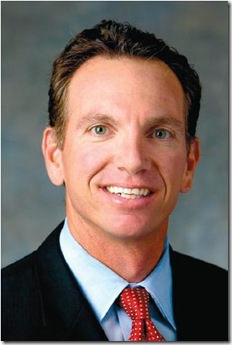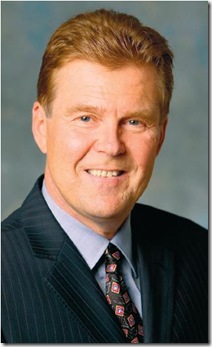In April CDMA pioneer Qualcomm opened up its first representative offices in the Middle East in Dubai Internet City. Given the overwhelming dominance of GSM technology in the region, at first it appears a curious move. However, when looked at in the context of Qualcomm’s participation in the WCDMA market and the slowing pace of growth of the cdma2000 market, this may prove to be a timely shift in focus for the San Diego stalwart.

Dubai epitomises the rapid development taking place in the wider region, which Qualcomm will be keen to participate in.
At the time of conducting the exclusive interview with Qualcomm chief marketing officer, Jeff Jacobs and Pertti Johansson, Qualcomm’s president of the Middle East and Africa, the CDMA technology provider’s Dubai Internet City offices were virtually empty. However, emblazoned proudly across one of the walls in the reception was the ‘Qualcomm’ name, heralding the San Diego-headquartered company’s setting of roots in the region.
It also happened to be Jacob’s first visit to Dubai, that in itself a telling indicator of the significance the company has started to place in the region’s development. CDMA-based mobile 2G technology is virtually invisible in the Middle East and Africa region as compared to GSM. Figures from the CDMA Development Group estimate that 65 CDMA operators in the region existed in the region as of mid-March this year, accounting for a total of 12 million subscribers. This equated to just three per cent of the global CDMA customer base.
Such an insignificant number of subscribers is hardly likely to justify Qualcomm dedicating time, effort, resources and the public relations offensive being staged by Jacobs. Thus it appears the real cut-and-thrust of Qualcomm’s moves is in the area of WCDMA, the underlying technology of 3G networks in the GSM world.
“There are 620 million 3G subscribers worldwide,” comments Jacobs. “500 million 3G handsets will be sold this year. There were 180 million WCDMA devices sold last year, and these figures indicate the strong business that has developed around WCDMA.”
Qualcomm estimates that in the coming four or five years, between 225-250 million total mobile subscribers will be added in the MEA region alone, and that up to three-quarters of these additions will be 3G-enabled.
Hence, given the level of investment many of the operators in the Middle East region in particular continue to make in 3G networks, Jacobs believes Qualcomm has a role to play in helping service operators to make the best technology choices and to gain the greatest benefit from those choices that they do end up making.


Jeff Jacobs believes Qualcomm is in a unique position to partner operators
Pertti Johansson insists the MEA region is important to Qualcomm
“We would like to be viewed as a trusted adviser to operators in this region as well as in other parts of the world,” Jacobs asserts. “The point is that we do not sell anything directly to the operators, so they can genuinely believe that the guidance we might give them is in their best interests. When they are successful we are successful,” he adds.
Qualcomm will view its presence in the region as a hub from which to drive business development activities, as well as being present to offer a technological perspective to many of the complex decisions that modern operators are faced with at this point in time.
“What we see is a trend of costs being stripped out of mobile phones and applications being placed in them,” suggests Johansson. “Emerging markets are experiencing a larger proportion of worldwide growth, so it makes sense for us to be present in the areas of such heightened activity,” he adds.
Given the historical war of words that has existed between Qualcomm, which, put in simplistic terms represented CDMA technology, in the face of GSM technology, which had been developed mainly by European vendors led by Ericsson, Nokia, Alcatel, Siemens and the like, it is a decidedly more engaging Qualcomm that today looks to extract its share of the WCDMA bounty.
“The vertical business model of old is changing to a horizontal model for everyone in the market outside of Nokia,” states Johansson. “There is a triangular relationship in our business, with the operator being at one corner, the original equipment manufacturer (OEM) being at another, and Qualcomm at the third and given it takes around nine months to develop a chipset, it is important to be aware of the requirements impacting chipsets early on.”
Qualcomm is adamant that its visibly heightened focus on WCDMA has nothing to do with the real or implied slowdown in the cdma2000 business, despite some damning pronouncements from the largest manufacturer of CDMA equipment Alcatel-Lucent about the prospects for the technology in 2008.
Around the same time that Jacobs was visiting Dubai towards the end of April, Alcatel-Lucent CEO Patricia Russo said on a conference call to analysts that she did not expect growth in the market for CDMA during 2008.
“The market is a declining market,” Russo asserted, but insisted that Alcatel-Lucent would continue to pursue new opportunities in CDMA, notably in Russia and India, to try to mitigate declines elsewhere. Russo also did acknowledge that the GSM market is due to be flat to slightly down in 2008.
Alcatel-Lucent’s latest prognosis on the health of the CDMA market comes after a massive write-down amounting to nearly US$3.7 billion in the fourth quarter of last year, mainly from the business unit selling CDMA wireless networks.
According to Stan Bruederle, research VP of technology and service provider research at Gartner, Qualcomm has been observing that cdma2000, is continuing to grow, but at a slower rate (in units) than the overall handset market. At the same time WCDMA is growing much faster and by 2012 is expected to be about three times the size of the cdma2000 market.
“Several years ago Qualcomm recognised that WCDMA was going to become the CDMA technology of choice by most cellular operators around the world and launched a product development programme for chipsets for WCDMA handsets,” says Bruederle. “Qualcomm now supplies WCDMA chipsets to two of the top five handset makers (Samsung and LG Electronics), and will be shipping chipsets for selected WCDMA handsets that are sold by Motorola, a third top five handset maker.”
In addition, Bruederle points out that Qualcomm supplies WCDMA chipsets to second and third tier WCDMA handset makers. By 2006, Gartner estimates that Qualcomm had become the leading supplier of WCDMA chipsets, and while the research company does not keep track of Qualcomm’s royalties in detail, Bruederle would expect WCDMA royalties are roughly proportional to handset shipments.
“In 2007 cdma2000 and WCDMA handset shipments were about the same. So roughly speaking royalties for WCDMA and cdma2000 would be the same,” comments Bruederle.
Peter Jarich, research director at Current Analysis is in agreement with Bruederle that it appears likely cdma2000 will have less of an impact on Qualcomm revenues over time as compared to WCDMA, which continues to be subject to relatively strong growth rates.
“Qualcomm would never say that cdma2000 is dying. However, it will attempt to promote WCDMA, and being present in the Middle East could help on this front,” Jarich supposes.
And he is right about Qualcomm’s unsurprisingly bullish view of cdma2000 now and into the future. “There are 94 cdma2000 operators around the world serving 300 million cdma2000 subscribers,” states Jacobs. “The technology is in a healthy position around the world.”
How things play out in the future, however, is a little harder to predict, and Gartner’s Bruederle attributes part of this to Qualcomm’s legal battles with Broadcom and Nokia.
“In any case we would expect WCDMA will represent more royalty revenues than cdma2000 (for Qualcomm) over time,” Bruederle states. “The company’s public face to operators is that cdma2000 is a superior technology to WCDMA and it has tried to convince them to use cdma2000. But its practical position recognises WCDMA’s leading position in the market and it offers a leading portfolio of products for both technologies.”
Looking beyond WCDMA to 3.5G and 4G technologies, Qualcomm asserts it is keeping abreast with the evolution of networks and is willing to execute upon the requirements and demands of service operators. However, Jacobs is of the opinion that WiMAX is likely to have a limited, niche appeal, while LTE is still some way off from commercialisation, and as such it remains difficult to forecast its impact.
“My sense is that WiMAX will be a niche play for niche markets,” contends Jacobs. “It is not as efficient as 3G as it requires a wider swathe of spectrum in order to effectively cover the same area covered by a 3G network. The economics don’t work out, and it will require economies of scale for them to,” he adds.
Jacobs forecasts that LTE will come to market in the 2010-2013 timeframe and within that period he says Qualcomm will continue to innovate like the other technology providers in the market. “We have publicly announced that we are going to support LTE on our chipsets and it is our belief that LTE is going to be deployed in pockets, but that 3G will still be growing and relevant for well over another decade.”
A widely accepted building block of LTE is OFDM (orthogonal frequency-division multiplexing), and Qualcomm has been building significant competence in this area. In August 2005, Qualcomm announced its acquisition of Flarion Technologies, a pioneer and leading developer of orthogonal frequency division multiplex access (OFDMA) technology and the inventor of FLASH-OFDM technology for mobile broadband IP services.
“We have experience in the area of OFDMA and are the largest contributor to the LTE standard in terms of technology,” Johansson asserts. “We have an incredible wealth of wireless experience.”
Intellectual property battles
In March, Qualcomm accused Broadcom, Nokia, Texas Instruments and others of collusion and price fixing in their wide-ranging dispute over licensing the San Diego company’s patents, according to media reports in the US.
The companies are fighting over how much – if anything – the others must pay Qualcomm for WCDMA (3G) technology.
In court filings, Qualcomm formalised charges of a conspiracy that it has previously alluded to, saying its competitors are coordinating attacks because they don’t want to pay royalties for Qualcomm’s “key patents” covering 3G networks. Broadcom and Nokia said there was no collusion.
Qualcomm believes its adversaries called themselves “Project Stockholm” and orchestrated a broad strategy against the company, according to its February 29 counterclaim to a lawsuit filed by Broadcom in New Jersey. The filing claims that the goal of Project Stockholm was to reduce the value of Qualcomm’s technology and to reduce competition from companies such as Samsung, which relies heavily on Qualcomm technology and has become the second-largest cell phone maker in the world.
The filing also said Broadcom and Nokia “conspired” to coordinate global litigation against Qualcomm. Broadcom has filed several lawsuits against Qualcomm in the US, while Nokia has sued Qualcomm in the US, Europe and Asia.
The heart of the dispute involves Qualcomm’s patents of WCDMA. Qualcomm pioneered the use of CDMA, and manufacturers pay Qualcomm an estimated five per cent of the cost of phones to licence its patents.
GSM technology was adopted in Europe and other parts of the world as a unified standard and European wireless companies such as Ericsson and Nokia were able to sell GSM handsets and equipment without paying royalties to Qualcomm.
For 3G networks, Europe has migrated to WCDMA, which has set up the conflict between Qualcomm, and Nokia and Ericsson. Qualcomm, which holds a number of patents in the area, says its WCDMA patents are key to the technology. Broadcom, Ericsson and Nokia each hold some WCDMA patents.
Qualcomm claims it is entitled to its five per cent royalties for WCDMA phones, while competitors are challenging that with a number of arguments.
Source: Union Tribune, San Diego; Comm.





0 comments ↓
There are no comments yet...Kick things off by filling out the form below.
Leave a Comment